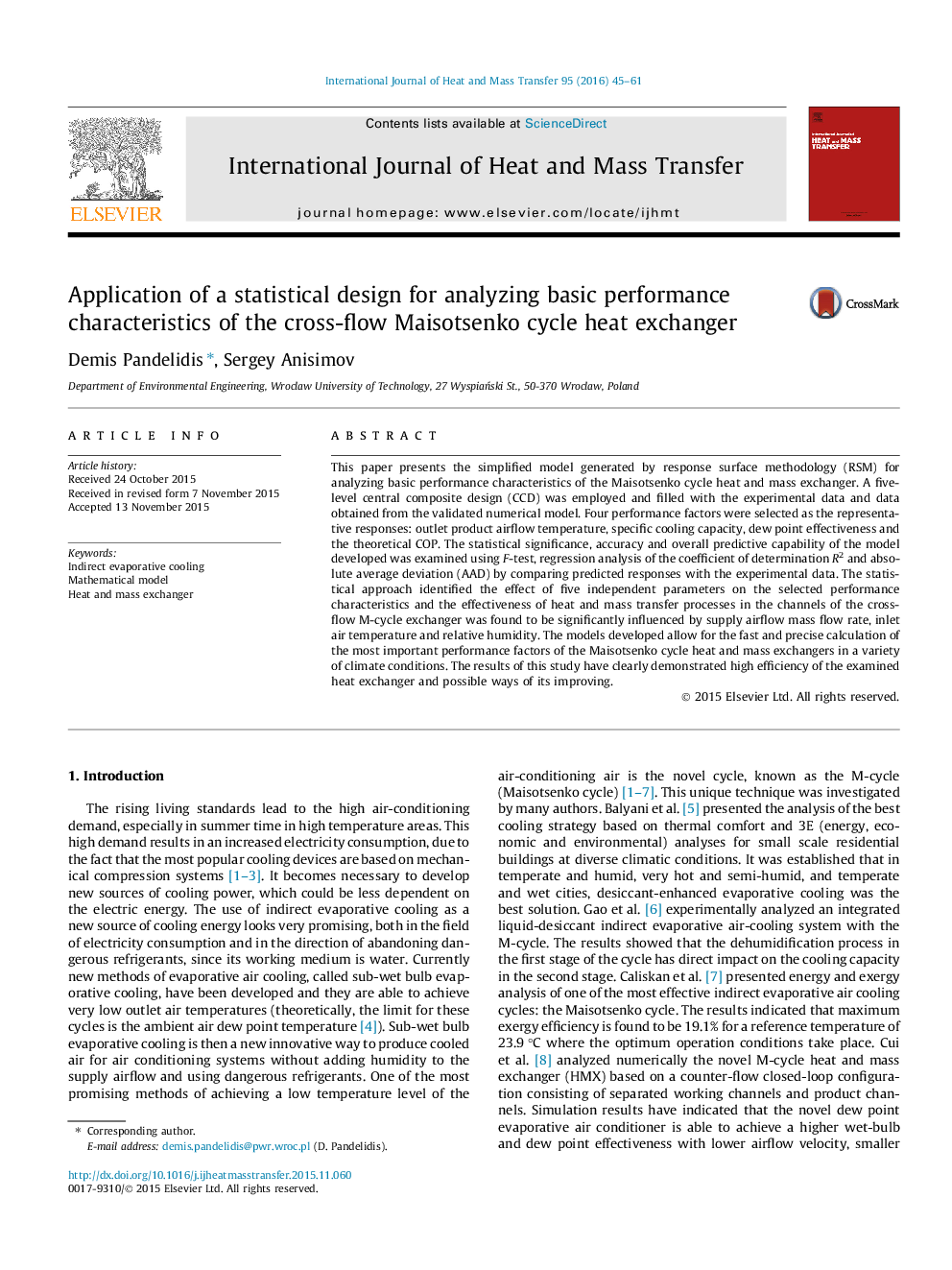| Article ID | Journal | Published Year | Pages | File Type |
|---|---|---|---|---|
| 656616 | International Journal of Heat and Mass Transfer | 2016 | 17 Pages |
Abstract
This paper presents the simplified model generated by response surface methodology (RSM) for analyzing basic performance characteristics of the Maisotsenko cycle heat and mass exchanger. A five-level central composite design (CCD) was employed and filled with the experimental data and data obtained from the validated numerical model. Four performance factors were selected as the representative responses: outlet product airflow temperature, specific cooling capacity, dew point effectiveness and the theoretical COP. The statistical significance, accuracy and overall predictive capability of the model developed was examined using F-test, regression analysis of the coefficient of determination R2 and absolute average deviation (AAD) by comparing predicted responses with the experimental data. The statistical approach identified the effect of five independent parameters on the selected performance characteristics and the effectiveness of heat and mass transfer processes in the channels of the cross-flow M-cycle exchanger was found to be significantly influenced by supply airflow mass flow rate, inlet air temperature and relative humidity. The models developed allow for the fast and precise calculation of the most important performance factors of the Maisotsenko cycle heat and mass exchangers in a variety of climate conditions. The results of this study have clearly demonstrated high efficiency of the examined heat exchanger and possible ways of its improving.
Related Topics
Physical Sciences and Engineering
Chemical Engineering
Fluid Flow and Transfer Processes
Authors
Demis Pandelidis, Sergey Anisimov,
